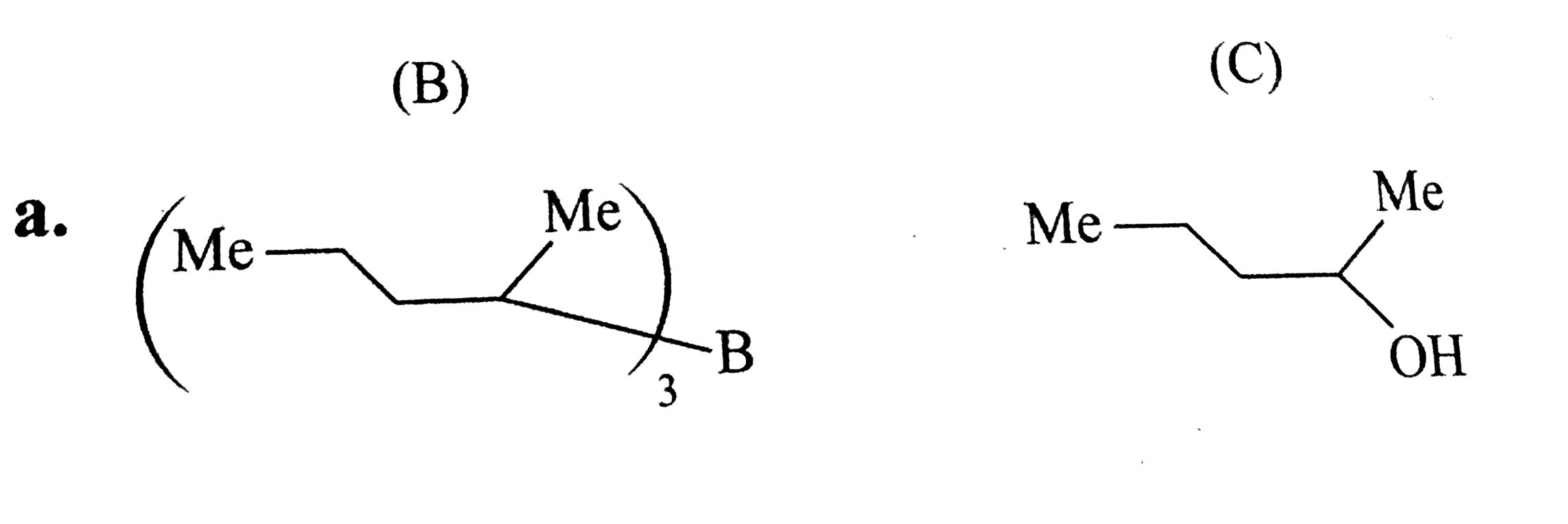What sort of informations can you draw from the following reaction?
(CN)2(g)+2ΘOH(aq)→CNΘ(aq)+CNOΘ(aq)+H2O(l)
(i) The reaction involuves the decomposition of cyanogen (CN)2 in the alkaline medium.
(ii) Both (CN2) i.e cyanogen and (CN−) i.e cyuanide ons are pseudo halogens in nature i.e they behave like halogens
(iii) Cyanogen undergoes disproportionation in the rection.It undergo simutanous increase and decrease in O.N the species involved.
(iv) It is an expample of redox reaction
Topper's Solved these Questions
- REDOX REACTIONSBOOK - DINESH PUBLICATIONCHAPTER - REDOX REACTIONSEXERCISE - Problems For Practice
20 Videos
- REDOX REACTIONSBOOK - DINESH PUBLICATIONCHAPTER - REDOX REACTIONSEXERCISE - Short Answer Type Questions
8 Videos
- REDOX REACTIONSBOOK - DINESH PUBLICATIONCHAPTER - REDOX REACTIONSEXERCISE - Reasoning Type Questions
4 Videos
- RATES OF REACTIONS AND CHEMICAL KINETICSBOOK - DINESH PUBLICATIONCHAPTER - RATES OF REACTIONS AND CHEMICAL KINETICSEXERCISE - Ultimate Preparatory Package
29 Videos
- S-BLOCK ELEMENTS (ALKALI AND ALKALINE EARTH METALS )BOOK - DINESH PUBLICATIONCHAPTER - S-BLOCK ELEMENTS (ALKALI AND ALKALINE EARTH METALS )EXERCISE - Assertion reason
12 Videos
Similar Questions
Knowledge Check
 H2O2+ΘOHA
H2O2+ΘOHA B
B C
C D
D
Which of the statements are correct about the following reactions ?
MeCHO+[Ag(NH3)2]⊕+ΘOH+→MeCOOΘ+AgAThe equivalent weight of MeCHO is 22.BThree moles of ΘOH are required in the above reaction.CMeCHO is an oxidising agent.DReduction of [Ag(NH3)2]⊕ occurs.Observe the following reaction,
2NO2(g)+2OH−(aq)→NO−3(aq)+H2O(l)+NO−2(aq) in this reaction,AOH− is oxidised to H2OBOH− is reduced to H2OCNO2(g) is reduced to NO−2 (aq) and oxidised to NO−3 (aq)DNO2(g) is reduced to NO−3(aq) and oxidised to NO−2 (aq)
Identify the substance oxidised substance reduced, oxidising agent, and reducing agent for each of the following reactions:
a. 2AgBr(s)+C6H6O2(aq)→2Ag(s)+2HBr(aq)+C6H4O2(aq)
b. HCHO(l)+2[Ag(NH3)3]⊕+3ΘOH(aq)→2Ag(s)+HCOOΘ(aq)+4NH3(aq)+2H2O(l)
c. HCHO(l)+2Cu2+(aq)+5ΘOH(aq)→Cu2O(s)+HCOOΘ(aq)+3H2O(l)
d. N2H4(l)+2H2O2(l)→N2(g)+4H2O(l)
d. Pb(s)+PbO2(s)+2H2SO4(aq)→2PbSO4(s)+2H2O(l)
View SolutionWhat are conjugate acids and bases ? Select the conjugate acid-base pair from the following reactions:
NH3(aq)+H2O(l)⇔NH+4(aq)+OH− (aq)
HCN(aq)+H2O(l)⇔H3O+(aq)+CN−(aq)
View SolutionWrite balanced ionoic half equation (oxidation and reduction) for each of the following reactions:
(a) Mn3+(aq)→MnO2(s)+Mn2+(aq)
(b) Mn(s)+NOӨ3(aq)→Mn2+(aq)+NO2(g)
(c ) H2O2(aq)+Fe2+(aq)→Fe3+(aq)+H2O(l)
(d) Te(s)+NOӨ3(aq)→TeO2(s)+NO(g)
View SolutionThe heat liberated in the following reaction
H+(aq)+OH−(aq)→H2O(l) is
View SolutionIn the reaction
H2O2(aq)I−−−→H2O(l)+12O2(g), where I− is
View Solution
